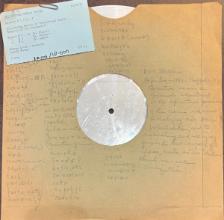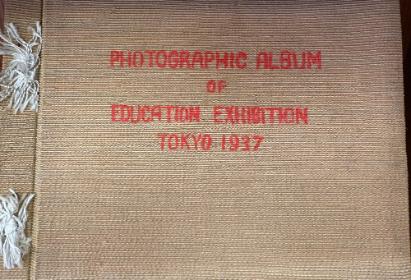Curiosity Cabinets: What We Put Behind the Glass
The curation of historic and special collections material for exhibition purposes—in this case Portraying Faculty: Eclectic Views—provides library staff an opportunity to consider archival and monographic resources in new and often emerging context.
This emergent context, in the form of new arrangements within the exhibition space, creates new relationships between the material, and evokes an altogether novel experience for viewers similar—yet also opposed— to that of the individual research experience.

However, behind the glass the object is just enough removed that an equity of trust must be placed in the exhibition itself. Rather than the autonomy of evidential pursuit within the hands of the patron-researcher, it is now the curator who facilitates the conveyance and import of information that is offered and—perhaps as important—what remains hidden.
We are afforded the opportunity to experience documents not solely for the information they provide (information processing), but as tangible objects that provide that information (information-as-thing).[1] For instance, while we may not be able to currently listen to the phonographic records of Nicholas Murray Butler (6), we can observe the object itself, infer, and transfer some knowledge from the medium to perhaps understand some-thing, from or about Mr. Butler.
In such a case, we must channel our inner Marshall McLuhan and consider the medium as the message. Here we begin to understand the object of information transference begins with the container, as opposed to the content. What does it mean that Butler's speech was on a very particular type of phonographic material? What might the quality of sound be? When was this a popular method of recording and what can be inferred from the historical context of that time period? Observe the notes on the sleeve: the message changes with the medium. The observer is provided information about the content of the object, metadata in the parlance of librarians.
Similarly, while the observer cannot open the photography album of Dr. Paul Monroe’s documenting the Education Exhibition, Tokyo 1937 (39), there is the assumed connective tissue between other objects on display, including his other personal effects such as his bible (40), and his personal, professional, and intellectual involvement at Teachers College.
assumed connective tissue between other objects on display, including his other personal effects such as his bible (40), and his personal, professional, and intellectual involvement at Teachers College.
The selection of the material, as a whole, required the curators to select objects with five distinct perspectives and guidelines in mind:
- Understanding the relationship to Teachers College and its faculty, reinforcing the institution’s intellectual and historical legacy (institutional relevance);
- Reflection on the broad influence of Teachers College faculty in order to articulate the impact that faculty had in multiple fields (diversity of disciplines);
- In an effort to illustrate the evolution of educational thought over time we sought to examine the historical breadth was represented, pulling from the late 19th century through the 20th century (chronological representation)
- The curatorial team attempted to present material that related to educational issues and practices within the complexities of the geopolitical landscape beyond its own US borders to include Soviet education, Far Eastern and South American pedagogy, as well as educational efforts in East Africa and USAID projects (global perspective)
- By featuring personal diaries, photographs, and lecture notes, Gottesman Libraries attempted to offer the opportunity to consider these faculty members beyond their academic roles and, more profoundly, as individuals. (tangible connections
With this ethos in mind, each item was selected as an object to represent an aspect of the subject’s intellectual history, not the entirety of the subject’s contribution or thought. Some of these decisions were made with the consideration of attempting to represent the most overarching and impactful work—i.e., George Counts work on the Soviet education system. Other considerations included the opportunity, as briefly discussed above, to present an object that has previously offered minimal value in terms of traditional methods. While still at other times, we were inclined to choose something that provided institutional context to the interaction between faculty such as the Social Frontier (17).
We hope you enjoy the Cabinet of Curiosities' Portraying Faculty: Eclectic Views in support of the Offit Gallery’s current exhibition Faculty Portraits: An Historic View.
[1] Phenomenology, experience, and the essence of documents as objects

